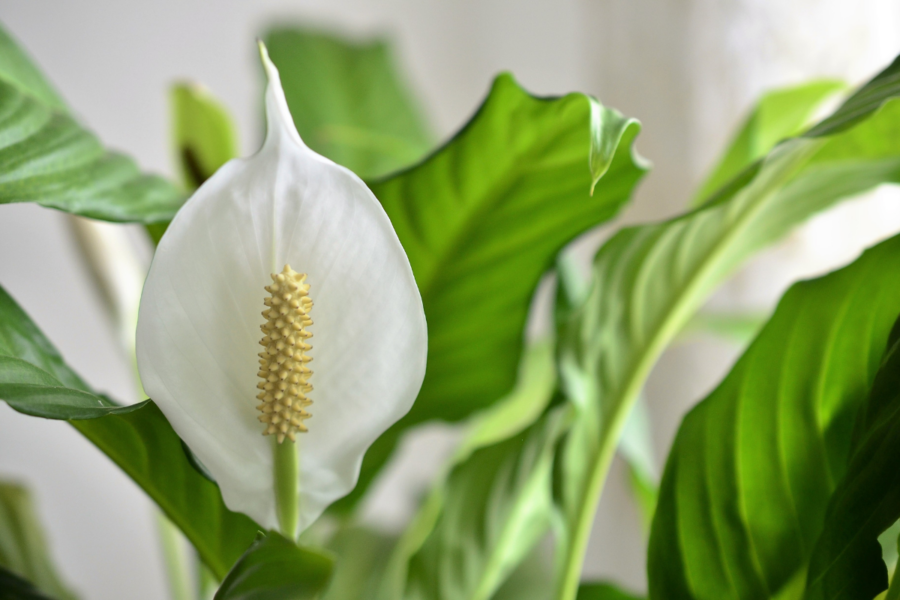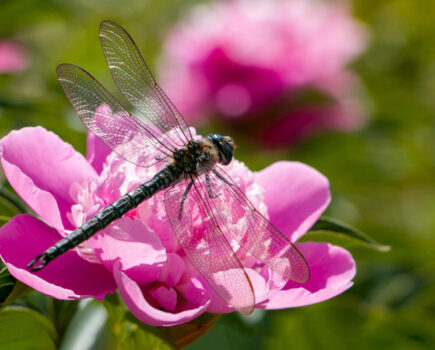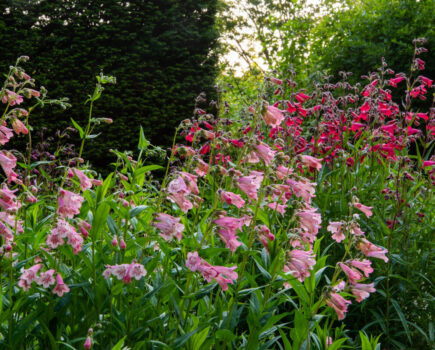Ruth’s plant was struggling and needed urgent help
Peace lilies are one of the most attractive and easiest houseplants to grow, so it is hardly surprising they are so popular. Set somewhere bright, but out of direct sunlight, where there are stable temperatures they will live for years. They are low-maintenance, requiring little more than a monthly feed and just enough water to keep their compost damp. However, when happy they grow fast and can soon outgrow their containers and start to fade a little.
Our peace lily has been looking sad for some time, with yellowing leaves and a tendency to droop, so I decided to re-pot it – and I’m glad I did. On sliding it from the container I saw that the plant was completely congested, the pit full of roots that were starting to circle themselves. This meant that it was unable to take up enough nutrients and moisture to help it thrive. The rootball was packed so tightly I had to use a clean, sharp knife to cut it into four pieces, which I replanted two to a pot with fresh container compost.
Houseplant compost is widely available, but I find general purpose or container compost just as good, and often cheaper. If you use multipurpose compost, add some fertiliser to give the plants an extra boost.
Pest control
Natural remedies work well
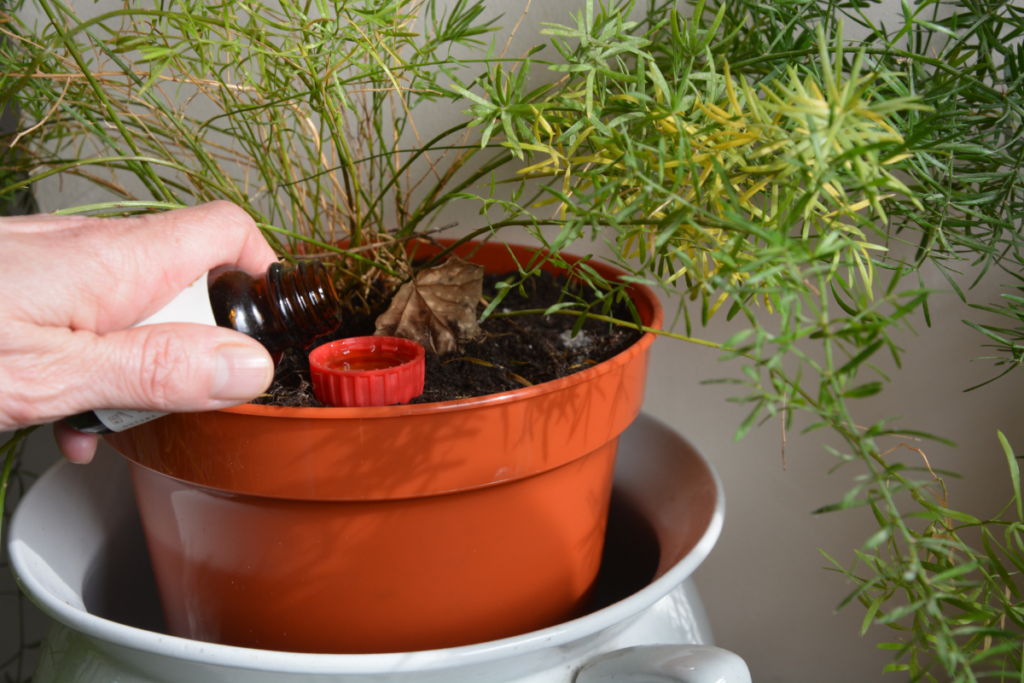
Almond oil lures fungus gnats to their doom
- Houseplants attract their fair share of pests, but because they live in a confined space I don’t need to use chemicals to control them. This is especially important if you have pets or small children around, or are prone to allergies or lung conditions.
- Regularly wiping the leaves with a soft, damp cloth removes dust, debris and pests that are thinking of taking up residence. Wiping is especially good against scale insects, as their hard ‘shells’ often make them impervious to poison.
- Fungus gnats, the little black flies that live in compost, are a common nuisance. Beat them by filling a bottle top with almond oil and placing it on the compost. The flies are attracted to its sweet scent, fly in and drown.
- Change it every few weeks when it is full of little corpses!
- Do be aware to place any peace lily out of reach of any pets and young children as the leaves are poisonous when ingested.
How to divide an ailing peace lily
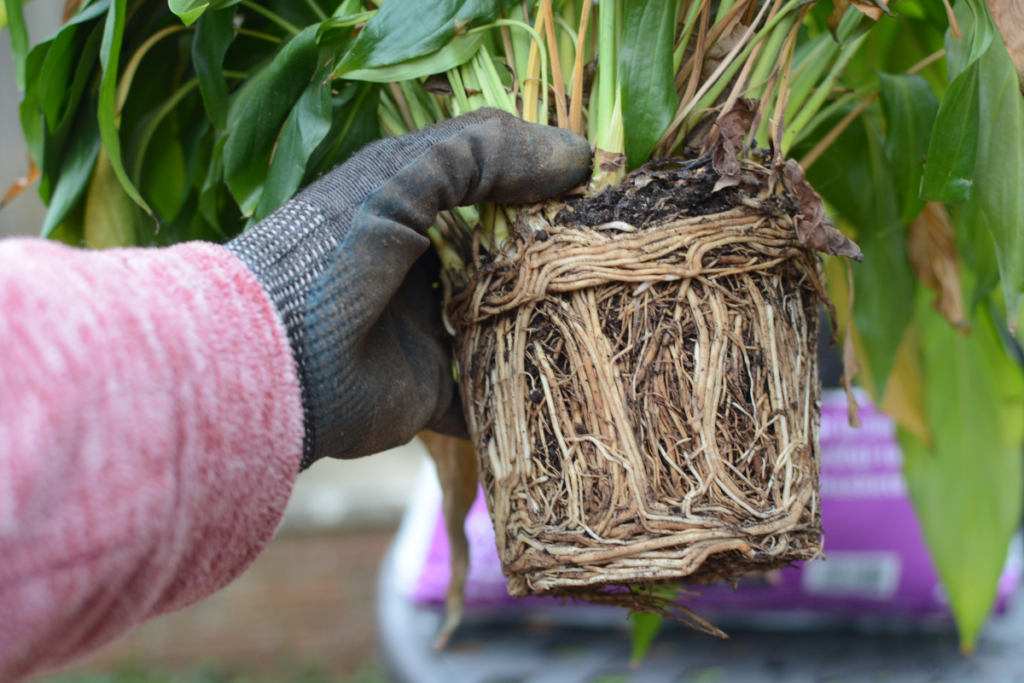
1. The poor lily was completely pot bound, its roots tightly constricted and starting to circle the pot.
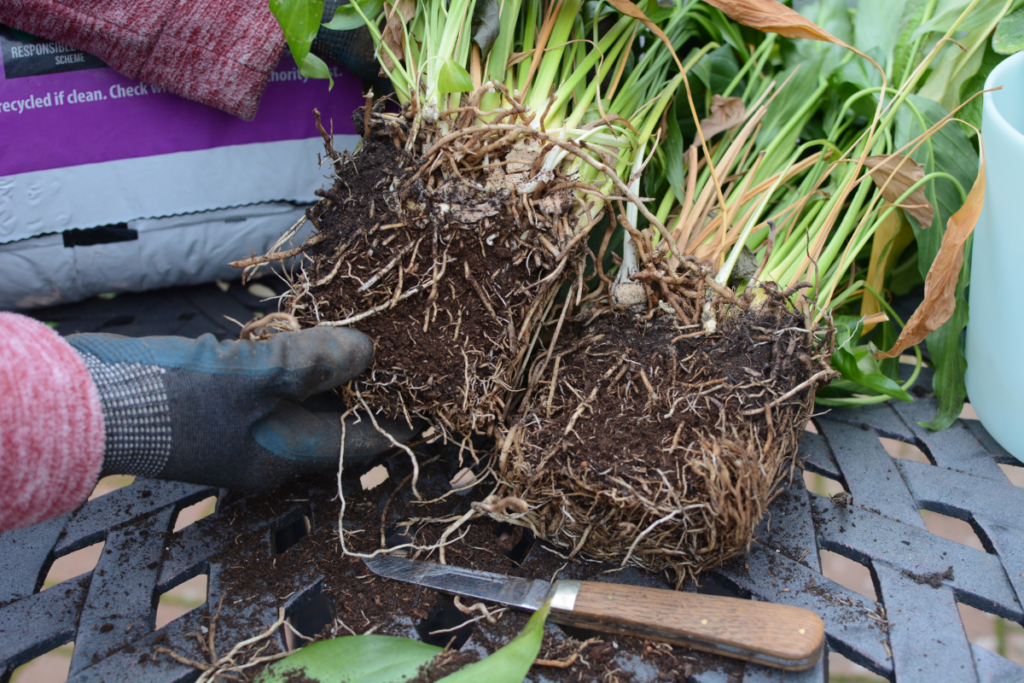
2. The roots were too congested to open up, so I cut the rootball and plant into four piece using a sharp, clean knife.
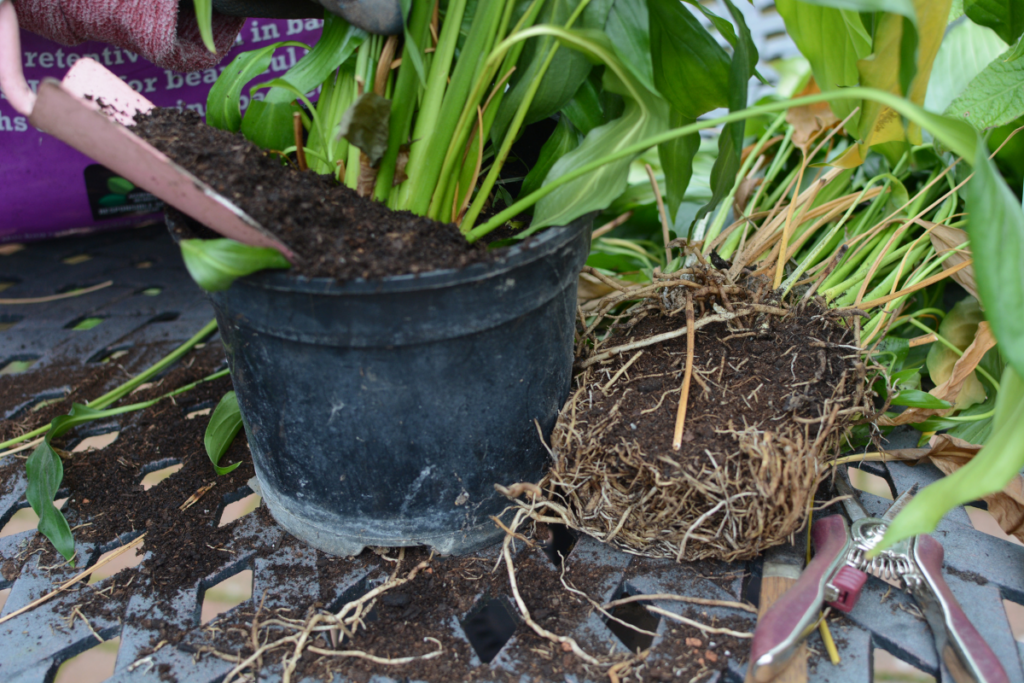
3. I then repotted the plant, two pieces per large pot and infilled around the roots with container compost.
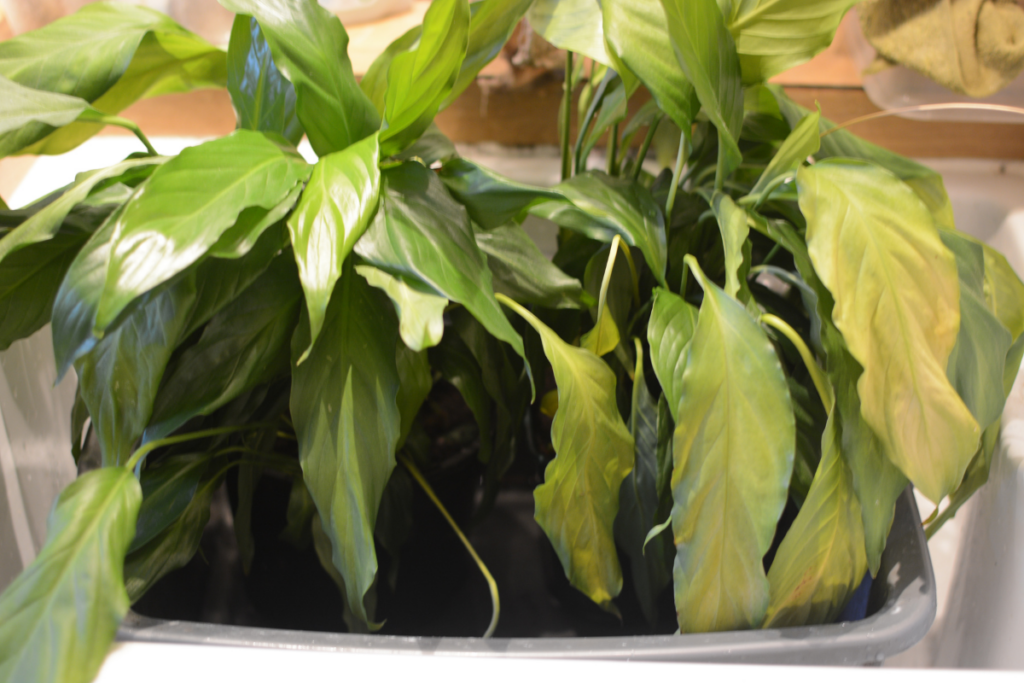
4. Finally, I stood the repotted lilies in water for a few hours to give the roots a good drink, and watched them revive.
Find more tips, advice and articles like this at the Amateur Gardening website. Subscribe to Amateur Gardening magazine now.

